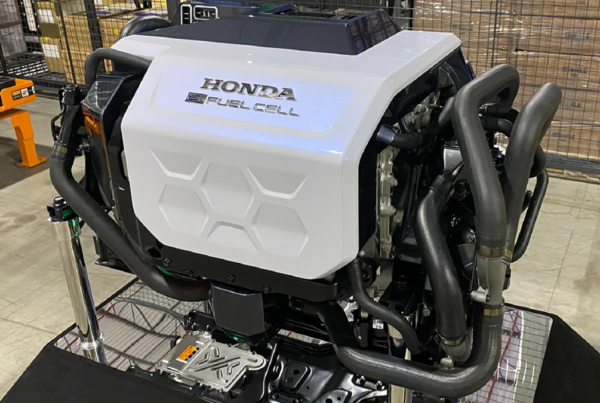
Onsite* green hydrogen production cost is expected to halve by 2030, signalling a boost to South Korea’s hydrogen ambitions, says Wood Mackenzie.
Under President Moon Jae-In’s administration, the government has announced ambitious plans to become a hydrogen-based economy by 2050. This include plans for three hydrogen-powered cities by 2022 and accelerating deployments of fuel cell vehicles (FCVs), all of which have spiralled the country into a frenzied race to invest in hydrogen.
Speaking at a media briefing today, Wood Mackenzie research director Prakash Sharma said: “Cost is the biggest challenge today as green hydrogen costs 2-4 times more than fossil-fuel hydrogen. This is set to change by 2030. Net-zero emissions policies, falling renewables costs and strong business activity in electrolyser manufacturing and efficiency gains could deliver up to 50% cost decline for green hydrogen by 2030.
“This magnitude of cost reduction will require sub-US$30 per megawatt-hour renewable electricity prices, large size electrolyser deployments and high load hours.”
Currently, the fifth largest hydrogen market globally, South Korea’s demand is expected to hit 4.44 million metric tons this year, with close to 86% of demand coming from refineries. Desulphurisation is the primary use case of hydrogen in refineries. Due to air quality concerns, refineries use hydrogen to remove sulphur, and other impurities, from gasoline and diesel. The hydrogen supply is produced locally using fossil fuels and is emissions intensive.
South Korea aims to expand hydrogen use across industry, heating and mobility sectors. The production of FCVs (including exports) will increase to 810,000 by 2022 and 6.2 million by 2040 from under 2,000 units today. The government plans to import hydrogen as well as produce it domestically.
Globally, mobility forms the smallest demand for hydrogen market, representing less than 0.1% of global 2020 hydrogen demand. While the network for hydrogen refuelling stations is expected to grow rapidly, refuelling stations today have low utilisation rates due to the limited number of FCVs. This sector has grown over 24 times since 2010 but remains a very small portion of demand.
Sharma said: “The hydrogen journey for South Korea will not be a smooth sailing one. Continued investments in hydrogen infrastructure and policy support are needed to meet long-term goals.”
South Korea’s solar and wind energy is also making strides in the power sector. The country is expected to come close to reaching its 20% renewables target by 2030. Today it sources 7% of its power from renewables including only 3% from wind and solar. Two-thirds of power is supplied from gas and coal.
Research director Alex Whitworth said: “South Korea has lagged behind other countries in renewable deployments to date but declining costs and the ‘New Green Deal’ initiative will help the country to catch up in the next decade.
“Over US$46 billion will be invested in South Korea’s renewables sector by 2030, quadrupling the share of wind and solar in generation to 13%. Another 6% will be sourced from biomass and other renewables taking South Korea to 19%, just shy of its 20% target.”
New wind and solar power projects are already becoming competitive with gas power today, and are expected to be able to compete directly with coal-fired power in South Korea by 2025, according to levelised cost of electricity data from Wood Mackenzie.
Whitworth said: “By 2030 new utility-scale solar and onshore wind will be 20% cheaper than coal-fired power, while offshore wind and distributed solar will both be cheaper than gas-fired power. Lower renewables costs will help South Korea displace fossil fuels with cleaner power, while still maintaining stable end-user power prices.
“These remarkable technology changes are fundamentally reshaping South Korea’s power industry. Beyond 2030 we expect subsidy-free renewables investments in South Korea to accelerate further.”
*Onsite cost does not include transport or storage costs.
Source: Wood Mackenzie
Read the most up to date Fuel Cell and Hydrogen Industry news at FuelCellsWorks




